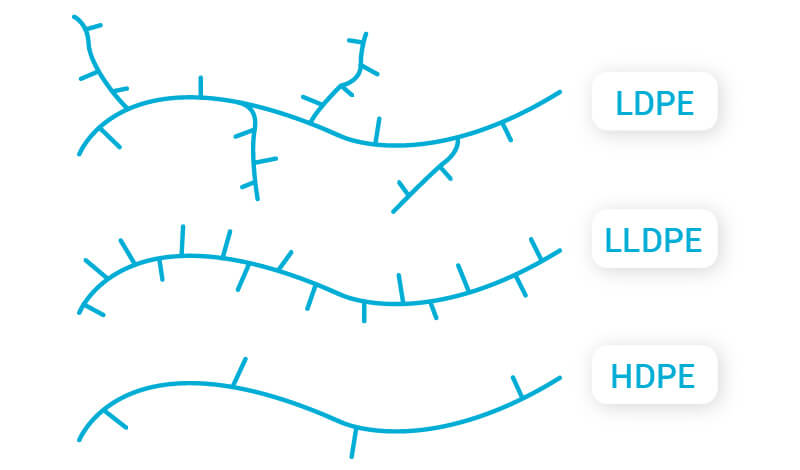Polyethylene materials are primarily used in the production of our products and are considered polyolefins. These materials are high molecular weight hydrocarbons and have a lower specific gravity than water. Within the Polyethylene family of plastic, there are differences in the degree of branching in molecular structure. Below are descriptions of our most common.
HDPE (High Density Polyethylene)
Known for its high strength-to-density ratio, the density of HDPE ranges from 0.930 to 0.970 g/cm3. HDPE has little branching, giving it stronger intermolecular forces and tensile strength than LDPE. Its property benefits include: Stiffness, Strength, Toughness (ability to deform without breaking), Resistance to solvents, moisture permeability, ease of processing, ease of recycling and can withstand somewhat higher temperatures. (120C). HDPE has no “memory” and little to no UV resistance. Uses – Oriented netting exposed to heavier loading, where memory is not important.
LDPE (Low Density Polyethylene)
This product has the most excessive branching. This causes the low density to have a less compact molecular structure. It has a density of 0.910 to 0.925 g/cm3. It exhibits good resistance to solvents, more flexible and improved impact strength than HDPE. The molecular structure allows for good “memory” and it has little to no UV resistance. Uses – Protective types of sleeve netting requiring “memory.”
LLDPE (Linear Low Density Polyethylene)
This product has a significant number of shorter branches in its chain, which “slide” against each other upon elongation without becoming entangled like LPDE’s long branching chains, which get caught on each other. This gives LLDPE higher tensile strength and higher impact / rupture resistance than the LDPE. It has a density of 0.910 to 0.940 g/cm3. LLDPE increases the “toughness” and the capacity to absorb energy. Essentially elongation during impact will minimize rupture. Uses – Packaging nets requiring greater strength and flexibility.
PP (Polypropylene)
Its properties are similar to polyethylene, but less rigid with higher heat resistance and a density of 0.860 g/cm3. Polypropylene has high flexural strength due to its semi-crystalline nature, a relatively slippery surface, resistant to moisture absorption, good chemical resistance, fatigue resistance and impact strength. Uses – mesh applications exposed to chemicals and higher temperatures.

